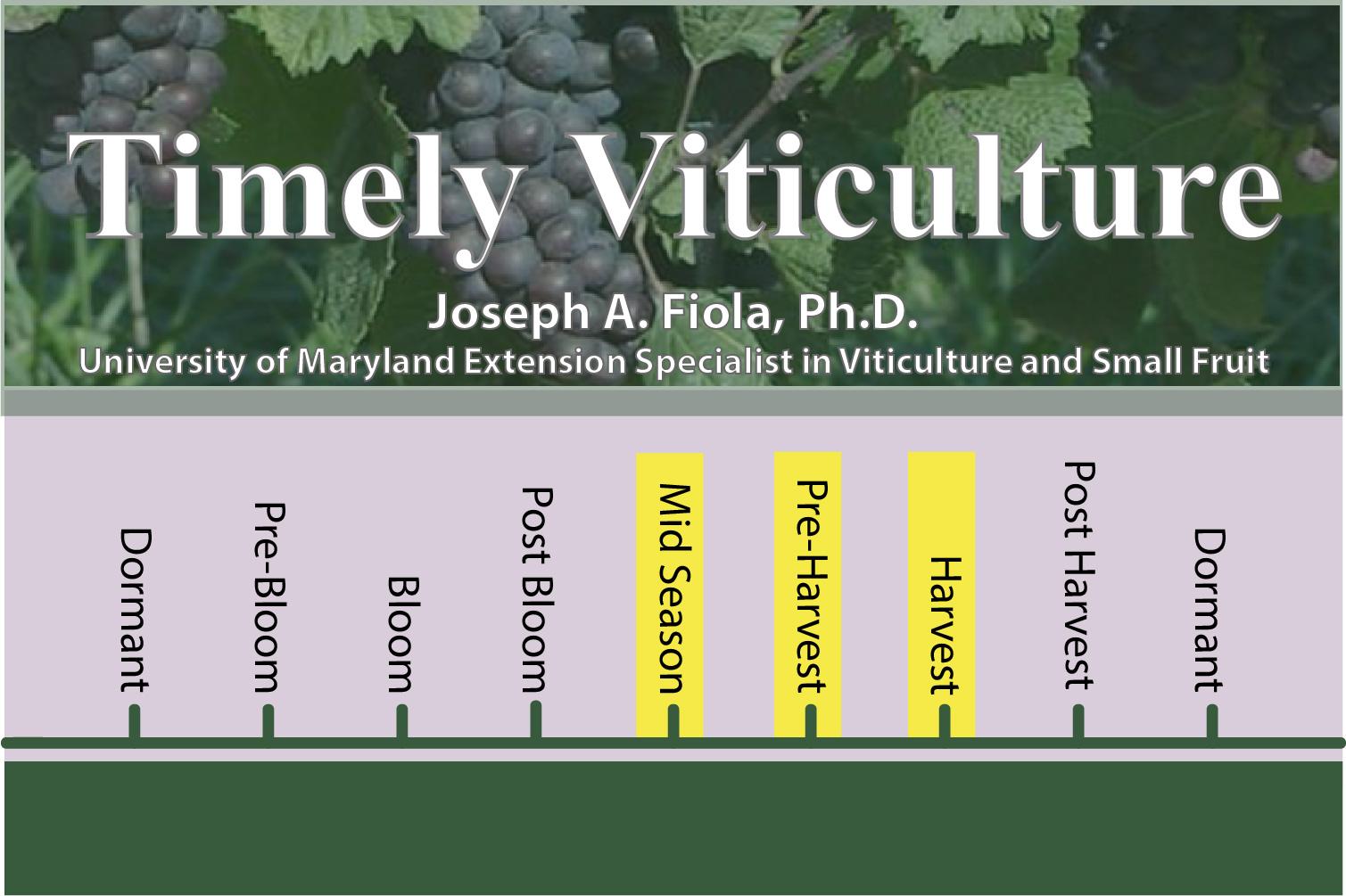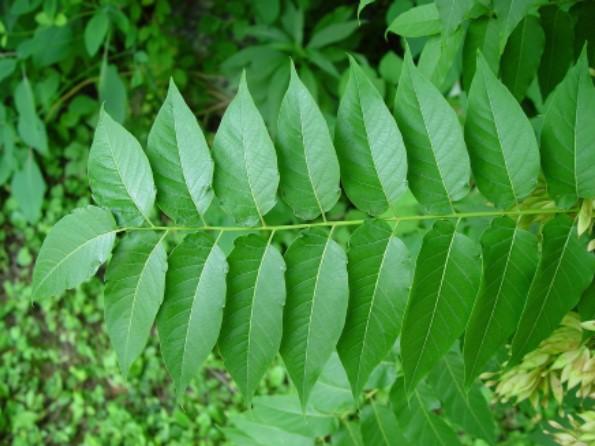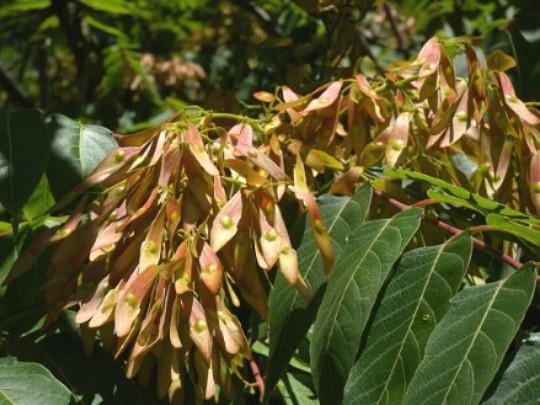Spotted Lanternfly (SLF) II - Scouting and Management
The Spotted Lanternfly (SLF) is now confirmed in all Northern tier and Eastern Shore Counties in Maryland and continually moves south. This insect is a “newly introduced” pest that has the potential to be very significant and damaging in vineyards if not managed. But can be easily managed with proper diligence.
Please see the TimelyVit Spotted Lanternfly (SLF) I—Background for background information. This Timely Viticulture was created to give growers information on how to scout for SLF and some management options and strategies.

Scouting SLF

- If you have not yet detected SLF in your vineyard but know they are in the area, scouting for and monitoring Tree-of-Heaven (TOH) or other hosts (Sumac, Sycamore, Black Walnut, and Maple) adjacent to the vineyard is the best place to start.
- After SLF is established in the area, overwintering egg masses are commonly found on grapevine trunks and TOH but also on objects such as rock, vehicles, etc.
- When egg masses are located, destroy by scraping into a container with 70% alcohol and removing them from the vineyard.
- The emerging nymphs move from the surrounding woods and TOH to grape and other hosts. Young immature stages (1-3 instars) resemble a large black aphid with white spots (figure B); the final most mature immature stage (4th instar) develops bright red patches and are over 1/2” long (figure C).
- Nymphs and adults are vascular feeders (phloem and xylem) so they will primarily be found on trunks, cordons, and canes; they are NOT typically found on the foliage; all 4 immature stages of SLF can feed on grape wood.
- The majority of an SLF population within a vineyard is observed on the edge; on average, 54 percent of the SLF population is within the first 50 feet of the vineyard edge.
- In addition to the native population in the vineyards, large numbers of adults may migrate from surrounding areas in mid-August through the end of the season.
- For previously uninfected vineyards, adults begin appearing in late July and early August. But typically, the numbers are limited, do not cause significant damage, and therefore do not warrant a spray. The highest immigrating populations are typically observed from August into October.
- In mid-to-late summer and early in the fall the adults will heavily congregate on stems of Tree of Heaven and grapevines (figure G).
- Sooty mold patches on clusters and leaves can be a sign of feeding.
- In late fall, search and destroy efforts should switch to the location of egg masses. Adults lay egg masses on trees and nearby smooth surfaces, like stone, outdoor furniture, vehicles, and other structures. Again, destroy by scraping into a container with 70% alcohol and removing them from the vineyard.
Management
- As with any insect pest, small populations are only causing minor damage and typically do not warrant control. Always remember if you apply an insecticide you may be disrupting the delicate balance with beneficial insects which may lead to other pest outbreaks (mites, aphids, etc.)
- After SLF is established in a vineyard (eggs laid the previous season), low populations of nymphs can be tolerated but should be monitored. For hot spots of dense populations of nymphs (i.e., >10–50 per vine), spot treatments may be needed.
- Nymphs have not been observed reinfesting vineyards like adults do, so typically only one application of insecticide is necessary (if at all). Short-acting insecticides are recommended.
- Applications targeted for grape berry moth and Japanese beetles in mid-summer will be effective in managing nymphs in the vineyard.
- Small populations of adults can be crushed or swatted by hand.
- There need to be multiple (5-10) adults per vine before you reach a threshold to manage.
- Penn State Extension has been testing insecticides for efficacy. They are relatively easy to kill, and there are a number of effective insecticides, with various REIs and PHIs, which afford many options based on cultivar development stages. For a list of potential insecticides, please go to https://extension.psu.edu/spotted-lanternfly-management-in- vineyards.
- If populations are high in August, use residual activity and longer PHI now until you get close to harvest, then switch to the knockdown and shorter PHI materials during harvest. Utilize the long residual activity (and long PHI) materials after harvest for sustained control. As always, follow the label and rotate chemical classes appropriately.
- Again, the majority of the SLF population within a vineyard is typically observed within the first 50 feet of the vineyard edge, so only spot treatments are typically needed.
Management strategies for controlling the populations while in the areas surrounding the vineyard are highly recommended. As always follow the label. Please see below.
- Currently, there are no known natural enemies of SLF that are thought to reduce populations in the United States. Some generalist predators (spiders, praying mantids, parasitoids, etc.) will attack and eat SLF. Two species of fungal pathogens have been identified attacking SLF in Pennsylvania.
- Neem oil and insecticidal soap can provide some control, but soaps do not appear to control adults.
- Application of insecticides may kill SLF within the vineyard, but be aware that reinfestation of SLF from the surrounding woodlots is likely.
Population Management Utilizing Tree Wraps/Banding
- The immature SLF does not fly, so they must walk up to their host (vines/tree).
- There has been some success (with trees) trapping the SLF on sticky bands placed around the circumference of the tree. Insects walk onto the band and are trapped.
- This can be effective in trapping and reducing the population, it is not recommended with grapevines with irregular flakey bark.


